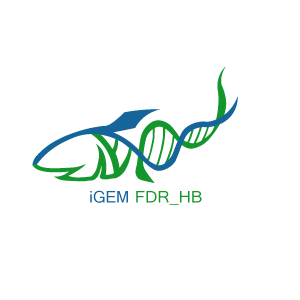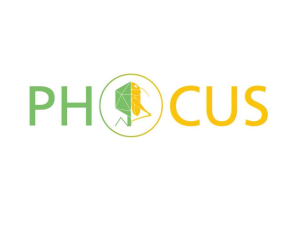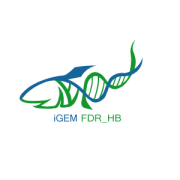myTXTL – Featured Publications
Please browse some recent publications utilizing targeted sequencing with myTXTL.
Liang, J. et al.. (2022) Directed Evolution of Replication-Competent Double-Stranded DNA Bacteriophage toward New Host Specificity ACS Synthetic Biology 2022 bacteriophage. featured myTXTL
Wandera, K. et al (2022). Anti-CRISPR prediction using deep learning reveals an inhibitor of Cas13b nucleases Molecular Cell 2022 CRISPR technology myTXTL
Wandera, K. et al (2022) Rapidly Characterizing CRISPR-Cas13 Nucleases Using Cell-Free Transcription-Translation Systems Post-Transcriptional Gene Regulation CRISPR technology myTXTL
Lin, P. et al. (2022) Type III CRISPR-based RNA editing for programmable control of SARS-CoV-2 and human coronaviruses Nucleic Acids Research 2022 CRISPR technology, SARS-CoV-2, myTXTL T7 expression Kit myTXTL
Haslinger, K. et al. (2021) Rapid in vitro prototyping of O-methyltransferases for pathway applications in Escherichia coli [featured] Cell Chemical Biology 2021 assay development, featured, protein production myTXTL
Taxiarchi, C. et al. (2021) A genetically encoded anti-CRISPR protein constrains gene drive spread and prevents population suppression Nature Communications 2021 CRISPR technology myTXTL
Khakimzhan, A. et al. (2021) Complex dependence of CRISPR-Cas9 binding strength on guide RNA spacer lengths Physical Biology 2021 CRISPR technology myTXTL
Collins, S. et al. (2021) Sequence-independent RNA sensing and DNA targeting by a split domain CRISPRCas12a gRNA switch Nucleic Acids Research 2021 CRISPR technology myTXTL
Blume, C. et al. A novel ACE2 isoform is expressed in human respiratory epithelia and is upregulated in response to interferons and RNA respiratory virus infection Nature Genetics 2021 SARS-CoV-2, protein production myTXTL
Kato, S. et al., (2021) Phase separation and exclusive protein localizations in compartmentalized cell-free expression reactions, arXiv 2021, artificial cell myTXTL
Daicel Arbor Biosciences, a division of Daicel Chiral Technologies, and leader in developing molecular biology research tools, is pleased to introduce Ravindra Ramadhar as its new President.
Previously Mr. Ramadhar was Director, Strategy & Business Development within Thermo Fisher Scientific’s Genetics Science Division. Ramadhar brings a vast technical background to Daicel Arbor Biosciences with his prior experience as a director in the life and genetic sciences sectors, specifically focusing on applied markets in Agribusiness. His leadership will positively impact Daicel Arbor’s vision, strategy and portfolio development.
Mr. Ramadhar earned a Master of Business Administration (M.B.A.) from Whitman School of Management, Syracuse University, and Bachelor of Science from Rutgers University. He also received many hours of executive education from various programs at Harvard University.
With the addition of Mr. Ramadhar to the team, Daicel Arbor’s current President, Joseph M. Barendt, Ph.D., will continue to serve as President of Daicel Chiral Technologies and shift his attention to strategic growth projects within the newly formed Life Sciences Business area of Daicel Group. “I am excited to add someone of Mr. Ramadhar’s depth of experience, enthusiasm and leadership skills to the Daicel Arbor team and look forward to working closely with him over the coming years.”
Ramadhar adds “Daicel Arbor Biosciences’ extensive capabilities in genomics and tools for synthetic biology coupled with its passion for science provide a strong foundation for growth. Daicel Arbor Biosciences’ solutions enable genomics and synthetic biology researchers to answer key biological questions, advancing their research goals.”
SARS-CoV-2 research tools for academic, industry, public health, and surveillance applications. More info here.
The International Genetically Engineered Machine (iGEM) competition is the largest competition of students in the field of synthetic biology. Every Spring since 2004, interdisciplinary teams from all over the world are formed who design and build biological systems that address a pressing environmental, scientific or societal need. They all have one goal, receiving one the Gold Medals at the Giant Jamboree held in Boston, MA in October.
Daicel Arbor Biosciences identifies with the hard work, passion and heart that all participating students put into their projects. By connecting with young professionals training to be the next generation of scientists and innovators, we recognize their commitment to improve and develop the scientific world.
We are proud to support the following iGEM Teams in this years’ competition with our versatile myTXTL® Cell-Free Expression platform. Visit their team pages to learn more about their insightful projects.
2020 Sponsored Teams
Team FDR Peru 
Project Title: Fishing for Cadmium
Our collaborator, TASA, the worldwide leader in the fishing industry, dilutes fish meal batches exceeding the 2 ppm export limit. This is a costly, time¬consuming and non-eco-friendly process. We aim to make a Cell-free Cadmium-sensor that we can freeze-dry to make a dipstick for the fishermen to use on anchovies/fish meal early in the production process; saving money, time, resources and reducing plastic waste.
FDR-HB Peru Team
TeamPhocus
Project title: Locust Crisis 
Our mission is to tackle the locust crisis by developing a sustainable bio¬pesticide through responsible innovation and collaboration. By doing this, we aim for food security and economic stability across the globe to achieve a brighter future for all.
Team Rochester 
Project title: Under-Diagnosis of Endometriosis
Our team’s project for this year is tackling the underdiagnosis of endometriosis. Endometriosis is a common chronic disease, affecting an approximate 10% of reproductive aged women worldwide. Endometriosis is characterized by abnormal growth of uterine-like tissue outside of the uterus and can cause severe pelvic pain, menstrual cramps and can lead to infertility. Despite its high prevalence and severity, methods of diagnosis and education on endometriosis is severely lacking, which we aim to tackle with a non-invasive and fast diagnostic assay, as well as with our endometriosis education campaign. You can follow the details and updates on our progress at Team Rochester.
Team Rochester
The iCEM grant sponsorship from Daicel Arbor Biosciences is now closed. Due to the current restructuring in academic environments, myTXTL will continue to offer students a 50% discount promo (shipping fees apply) for all participating teams using #iGEM2020AB. Please supply your team name when inquiring for a quote or submitting an order.
A list of eligible products are listed below. All products are available with free technical support from our experienced scientists as well as free shipping. For technical support, please email iGEM@arborbiosci.com.
This discount is available until October l, 2020. Terms and conditions apply.
Products Eligible for iGEM 2020 Promotion:
myTXTL ® – Cell-Free Expression System
• Sigma 70 Master Mix Kit
• GamS Nuclease Inhibitor Protein
• Linear DNA Expression Kit
• T7 Expression Kit
• HP Plasmids
• Toolbox Plasmid Collection
Daicel Arbor Biosciences is proud to provide sponsorship to ten teams participating in the 2020 iGEM competition with myTXTL®Cell-Free Expression kit and myNGS Guides guide RNA pools for their projects. The company will be participating in the virtual Giant Jamboree in Boston, MA on October 29 – November 2, 2020. We look forward to seeing you at next year’s competition. Complete the Daicel Arbor Biosciences application form here.
Ann Arbor, MI
Daicel Arbor Biosciences, a division of Chiral Technologies, Inc and worldwide leader in next generation sequencing (NGS) target enrichment, is joining the International Wheat Genome Sequencing Consortium (IWGSC) as a sponsoring partner.
The IWGSC is an international, collaborative consortium of wheat growers, plant scientists, and public and private breeders dedicated to the development of genomic resources for wheat scientists and breeders. These resources aim at facilitating the production of wheat varieties better adapted to environmental challenges, with higher yields, enhanced nutritional quality, and improved sustainability.
Sponsors are an essential part of the IWGSC. They participate in IWGSC-led projects and, as members of the Coordinating Committee, they help shape the IWGSC priorities, strategic plans, and activities. Jacob Enk, Ph.D., NGS R&D Manager, will represent Daicel Arbor Biosciences in the IWGSC Coordinating Committee.
“We are very pleased to have Daicel Arbor Biosciences come on board,” said Kellye Eversole, Executive Director of the IWGSC. “We have been working with the Daicel Arbor Biosciences team for a while now and they have been instrumental in providing our members and the wheat community with state-of-the-art genomic resources. Their leadership will be an invaluable addition to the IWGSC Coordinating Committee as we move forward with our activities to further build the foundation to accelerate wheat breeding.”
“We look forward to continuing what has already been a wonderfully productive relationship with the IWGSC,” said Jacob Enk. “Our aim at Arbor is to provide cost-effective scientific tools for crop breeding and genomics. Becoming a sponsoring partner of the IWGSC helps to serve that goal through providing insights on exactly what its active, well-organized research community needs to be successful.”
The IWGSC and Daicel Arbor Biosciences have had a fruitful partnership since 2018 that led to the release, in October 2019, of Daicel Arbor Biosciences’ myBaits® Expert Wheat Exome capture panel designed using the reference genome for bread wheat cv. Chinese Spring, IWGSC RefSeq v1.0, which was fully annotated and published by IWGSC members. The panel utilizes over two million probes to cover 200 megabases of high confidence exons in the genome and is compatible with both hexaploid and tetraploid cultivars of wheat. Daicel Arbor Biosciences is currently developing new iterations and expansions of the exome panel based on requirements of IWGSC members.
About Daicel Arbor Biosciences
Daicel Arbor Biosciences, a subsidiary of Chiral Technologies, Inc. (part of Daicel Corporation), is a development and manufacturing company founded by scientists to serve our peers in molecular biology applications. We are a passionate organization of scientists determined to deliver cost-effective, user-friendly products to researchers of genetics and synthetic biology. The team at Daicel Arbor Biosciences prides themselves on providing exceptional customer service and timely technical support to new or advanced users on our array of products. We routinely collaborate with our customers and research partners to develop innovative solutions to address their unique applications. For more information, visit http://www.arborbiosci.com/ and follow Daicel Arbor Biosciences on Twitter (@ArborBio).
About the International Wheat Genome Sequencing Consortium
The IWGSC, with 2,400 members in 70 countries, is an international, collaborative consortium, established in 2005 by a group of wheat growers, plant scientists, and public and private breeders. The goal of the IWGSC is to make a high-quality genome sequence of bread wheat publicly available, in order to lay a foundation for basic research that will enable breeders to develop improved varieties. The IWGSC is a U.S. 501(c)(3) non-profit organization. www.wheatgenome.org
For more information, contact:
Isabelle Caugant
Communications Director
International Wheat Genome Sequencing Consortium
communications@wheatgenome.org
Ann Arbor, MI 48103
(d/b/a Daicel Arbor Biosciences)
All Rights Reserved.

